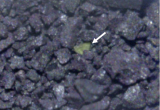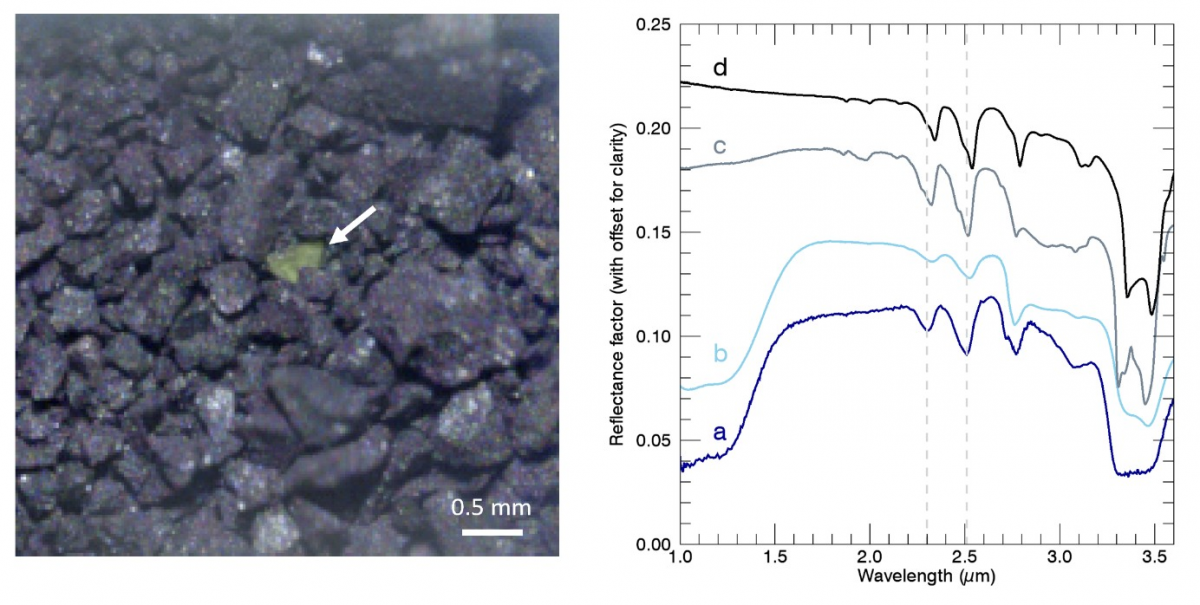Ryugu's samples reveal their secrets
The first analyzes of the samples collected from the primitive asteroid Ryugu, to which contribute the MicrOmega instrument developed at IAS, provided a first characterization of the physical and chemical properties of the grains.
In December 2020, the JAXA Hayabusa2 mission brought back to Earth more than 5g of samples collected from two sites on the carbonaceous asteroid Ryugu, a first in space exploration! These objects are potentially made of materials which can provide a unique insight regarding the conditions and processes of formation and primordial evolution of our Solar System. Importantly, the samples collected at the surface of Ryugu were preserved from any contact with the terrestrial environment until they were stored in the ultra-clean ISAS / JAXA Curation Facility in Sagamihara, Japan. They, therefore, constitute a collection with no equivalent in our laboratories.
A global characterization of the samples is currently being conducted within this Curation Facility. These analyzes provide a first determination of the physical and compositional properties of the grains using a very high precision balance, an optical microscope, a near-IR point spectrometer and, as a pioneer investigation, a hyperspectral microscope operating in the near-IR, thanks to the MicrOmega instrument developed by IAS (Orsay) which participates remotely to the acquisitions. These first analyzes, performed in a perfectly non-invasive and non-destructive manner, without any contact, treatment or preparation, in a controlled dry nitrogen atmosphere, are essential and unique as they are carried out on the entire collection and performed down to microscopic scales. They will also make it possible to link the observations made remotely by the spacecraft to the very detailed characterizations performed in the laboratory on a few grains extracted from the collection.
MicrOmega, which combines both imaging (at the scale of a few tens of microns) and spectroscopy, in a range of wavelengths making it possible to identify in each of the pixels of the image the main constituents, minerals and organics, has played a key role in these analyses. The results obtained showed that the collected samples were representative of Ryugu and that, at macroscopic scale, they are made of an extremely dark hydrated matrix (reflectance <3%) in which organics are embedded. At submillimeter scales, however, inclusions of distinct composition have been identified, including carbonate grains, some enriched in iron, with sizes up to several hundred micrometers. The analyzes also revealed the presence of nitrogen compounds, as well as other phases resulting from aqueous alteration.
Two articles published in Nature Astronomy summarize these preliminary results (Yada et al. 2021 and Pilorget et al. 2021).
The first characterizations of the samples collected on Ryugu have, thus, highlighted the uniqueness of this collection which has preserved some of the primordial compounds. Thanks to this first series of characterization within the Curation Facility, selected grains were extracted from the collection and distributed to international "Analytical Teams" for further and more detailed analysis. IAS is also involved in these activities, in particular through IR characterizations performed at the synchrotron Soleil. Characterizations still continue within the Curation Facility with the aim of establishing a catalog of grains accessible to the scientific community through AOs by Summer 2022.
Contacts : Cédric Pilorget, Jean-Pierre Bibring, Rosario Brunetto





